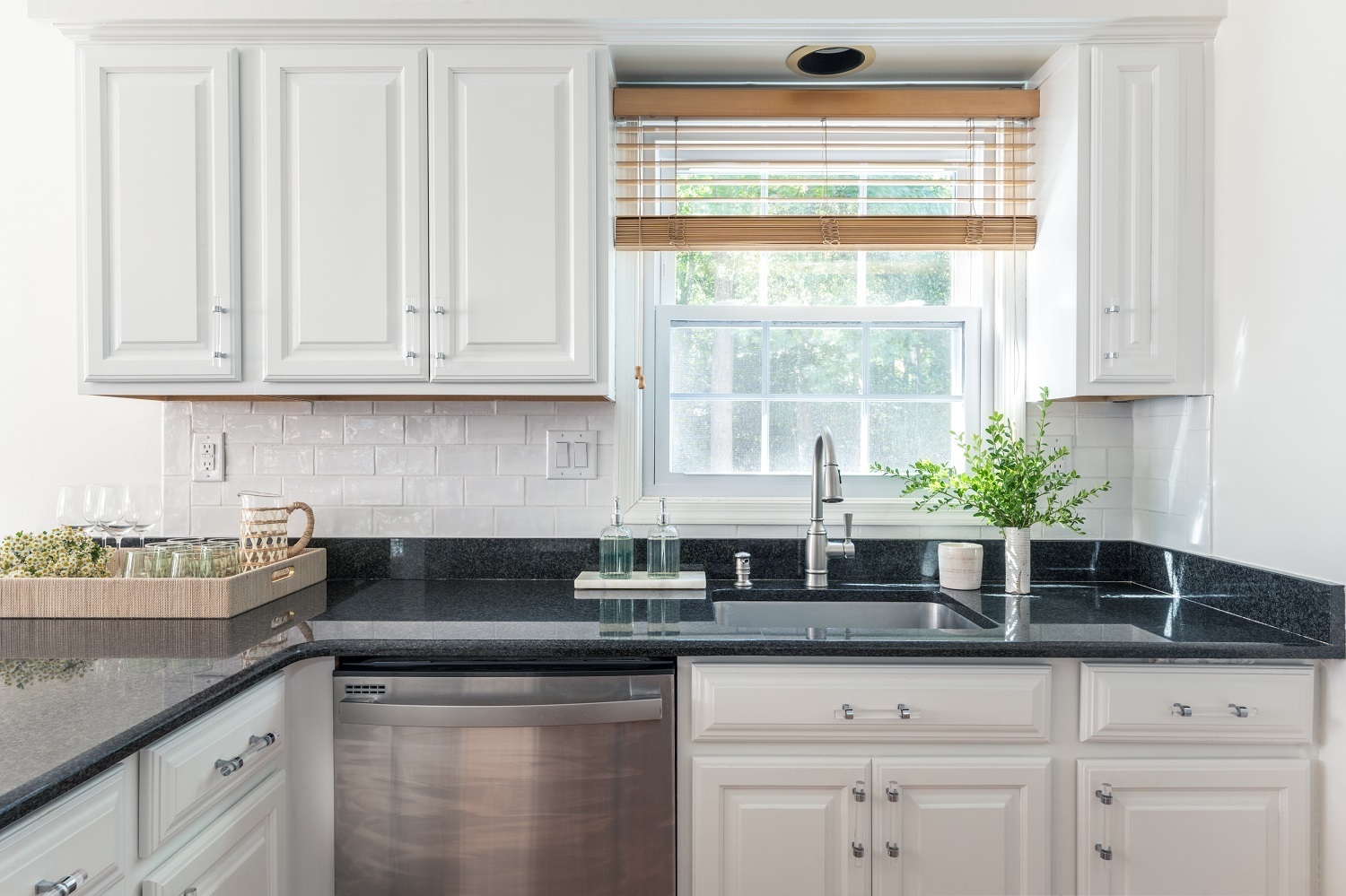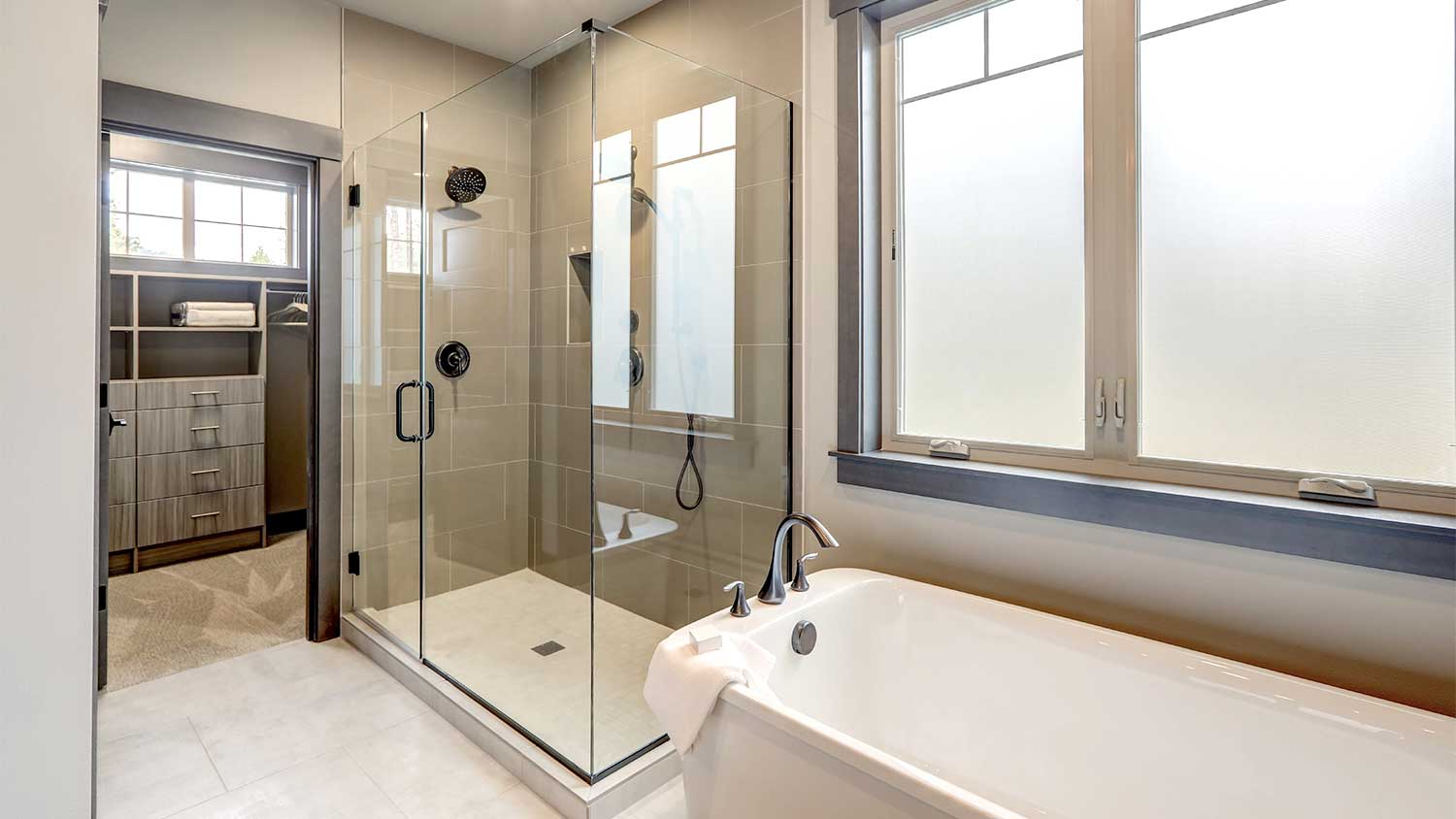10 Remodeling Ideas That’ll Save Energy
Become an energy-saving whiz with these 10 remodeling ideas


The grass isn’t always greener on the other side of a home remodeling project, but a bit of environmental action in your green living choices can make for a more fulfilling home. And while many large home improvement projects can save energy, there are simpler, more sustainable choices you can make around the house to do your part as an eco-conscious homeowner. Here are 10 remodeling ideas you can do right now to save energy.
1. Switch to LED and CFL Bulbs
By switching from traditional incandescent bulbs to LED lightbulbs, you can really cut down on electricity costs. LED bulbs use up to 85% less electricity than incandescent lightbulbs. While LED bulbs cost more upfront, they last 50 times longer, saving on energy costs. Not to mention, incandescent bulbs contain mercury and can’t be disposed of as sustainably or safely as LEDs.
Alternatively, compact fluorescent bulbs (CFLs) are also more energy-efficient than incandescent bulbs, albeit less so than LED ones. You can save up to 70% on electricity using CFLs instead of incandescent bulbs. CFLs also last about 10 years, which is 10 times longer than incandescent bulbs.
2. Buy More Energy-Efficient Appliances
Appliances use approximately 9% of your home power, according to Consumer Reports. Refrigerators, dishwashers, washers, and dryers take up the majority of that energy usage. Installing energy-efficient appliances can go a long way toward reducing your energy use. Pay attention to the annual operating costs, and choose the one with the lower operating cost when possible.
Also, look for the ENERGY STAR rating as you search for your new appliance, as these products use less energy than standard appliances. The program is run and managed by the Environmental Protection Agency and the U.S. Department of Energy and has rigorous standards for qualifying products as energy-efficient. In 2019 alone, ENERGY STAR saved homeowners $23 billion in energy costs.
3. Install Smart Power Strips
When an appliance is plugged in but not turned on, it still draws energy. The cost for this “phantom energy” can be as high as $200 per year. On the other hand, smart power strips can save you money because they keep appliances that are turned off from drawing electricity when not in use. The monitoring mechanism inside smart power strips contains a sensor that detects when energy is drawn unknowingly.
4. Add a Smart or Programmable Thermostat
Speaking of smart technology, a smart or programmable thermostat takes away that extra step of having to adjust your thermostat regularly, which can be tough to remember as you’re headed out the door in a hurry. Use these thermostats to adjust the temperature according to your schedule, which can save around $200 a year.
5. Consider Alternative Water Heaters
Similar to energy-efficient appliances, installing an energy-efficient water heater can have a huge impact on your water use. If you don’t need multiple hot water sources, a tankless water heater is a great option. Better yet, consider investing in a solar water heater to really turn your house into an energy-saving machine.
A tankless water heater or solar heater costs approximately $2,200 and $3,500, respectively. If a tankless water heater or solar heater is out of your budget, save money on water heating without buying a new appliance by:
Lowering the thermostat on the heater from 140 degrees Fahrenheit to 120 degrees Fahrenheit.
Insulating your water heater by wrapping a water heater-insulating blanket around it and securing it with tape.
Using less hot water when you bathe or shower to lower energy costs.
6. Check for Leaks
A sneaky cause for higher energy bills is a leaky electric water heater. In fact, water heaters use around 17% of an average home’s energy.
To save money, check your water heater for leaks—especially if you see a sudden and unexplainable increase in your electricity bills. One way to do this is by watching your water meter when all water sources aren’t in use. If the meter is still increasing, you may have a leak.
7. Add Energy-Efficient Windows
Poorly insulated windows increase your heating and cooling costs because they let out the warm air in the winter and the cool air in the summer.
ENERGY STAR-rated windows do a much better job of regulating the temperature, saving money on your power bill. Look for the National Fenestration Rating Council (NFRC) rating to find the top-performing ENERGY STAR products. Windows with the best ratings:
1. Have a warmer interior glass than standard windows
2. Use heat-reducing coatings that reflect infrared light
3. Contain warm edge spacers for additional insulation
4. Use two or three glass panes for added sound insulation
If you’re hoping to avoid replacing your windows, another way to reduce unwanted leaks and outdoor temperatures from infiltrating your home is to invest in window film and use caulking to seal in any window gaps.
The type of window you should buy depends on if you live in a hot or cold area, amongst other factors. It’s a good idea to speak to a window expert before investing in a window remodel, as many factors come into play that affect home window efficacy.
8. Improve Your HVAC System
An energy-efficient HVAC system is a must if you want to save power—especially in the colder parts of the nation. Here again, you will want an ENERGY STAR HVAC model to get the most out of your energy savings. Heating and cooling a house makes up about 43% of your electricity costs per year.
For those who don’t want to invest in a whole new system, simply improving the HVAC ventilation system in an existing unit can also save power. Ensure the ducts aren’t leaking, keep dust and debris away from vents, change your air filters regularly, and have a local professional perform routine maintenance on your system annually.
9. Weatherize Your Home
Even the best-made homes have tiny cracks and openings where air can escape or get in. When these cracks and openings aren’t sealed properly, you have the same problems you’d have for energy-inefficient windows and doors. There are a few DIY tricks you can try, like caulking and adding weatherstrips to doors and windows, but you can also hire a pro to properly seal or replace fireplace chimneys, water heater vents, and furnace vents.
If you’ve never had your home inspected for weatherization, consider finding a local energy audit pro to perform a home energy assessment on the best upgrades for your home.
10. Add Insulation
Last but not least, a properly insulated home keeps your indoor space warm and comfy in the winter and nice and cool in the summer, with less electricity use. ENERGY STAR bases insulation levels on what is known as R-values, which is just a fancy way of determining how well your insulation resists heat flow. To save electricity, you want to have the proper R-value of insulation installed in your walls, attic, crawlspace, basement, and floors.
Adding more insulation will increase your home insulation's R-value for many homes, but talk with an insulation installer near you to be on the safe side before starting an insulation project.





- Bathroom Remodeling
- Kitchen Remodeling
- Shower Installation
- Stair Installers
- Bathtub Installation
- Shower Door Installers
- Kitchen Design
- Bathroom Design Companies
- Storm Shelter Builders
- Pre-Made Cabinets
- Kitchen Refacing
- Bathtub Replacement
- Ceiling Tile Installation
- Suspended Ceiling Companies
- Residential Designers
- Stair Builders
- Remodel Designers
- Shower Enclosures
- Home Renovations
- Kitchen Renovations
- Garage Remodeling
- Grab Bar Installation
- Walk-In Tub Installers
- Tub to Shower Conversion
- Balcony Contractors
- 16 Ways to Start Living a Little More Green
- Things to Consider Before Buying Energy-Efficient Windows
- How Much Can You Save with a Home Energy Audit?
- Use This Checklist to Improve Your Home’s Energy Efficiency
- 13 Smart Ways to Weatherize Your Home in the Winter
- Tips for Reducing the Carbon Footprint in Your Home
- What Is the Best Temperature to Set Your Air Conditioner to in the Summer?
- Zero Energy Ready Homes: Everything You Need to Know
- 34 Modern Upgrades That Add Value to a Home
- 10 Tips on How to Make Windows More Energy Efficient










